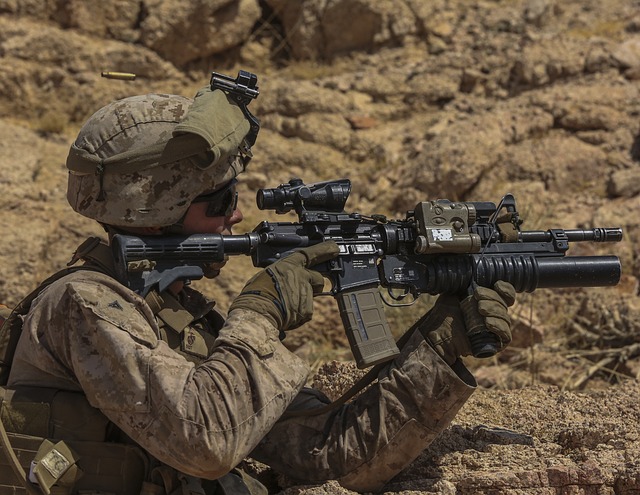The United States Army Special Forces, known as the Green Berets, have been pivotal in modern military tactics since their formation in 1952, with a focus on unconventional warfare. Originally established to combat the spread of communism during the Cold War, these elite soldiers have evolved to conduct a wide array of specialized missions globally, including training local forces and engaging in covert operations across varied terrains such as Vietnam's jungles and Afghanistan's mountains. Their impact on military strategy and doctrine is profound, influencing areas like foreign internal defense, counterinsurgency, and special reconnaissance, which have been instrumental in various military engagements. The Green Berets are celebrated for their resilience, adaptability, and significant historical contributions to America's defense strategy. Dedicated museums and exhibits honor their legacy, providing insight into the complexities of their missions and the sacrifices made by these dedicated soldiers who play an integral role in maintaining global peace and security within the U.S. defense apparatus. The US Army Special Forces' storied history and commitment to excellence are highlighted through these cultural touchstones that educate on their pivotal role in shaping national defense policies and achieving strategic objectives, emphasizing their critical function in sustaining global stability. These museums serve as both historical archives and educational platforms for understanding the intricacies of modern military operations and the strategic importance of elite forces like the US Army Special Forces.
Exploring the rich heritage of the US Army Special Forces, our article delves into their inception, the evolution of their elite training, and the pivotal roles they’ve played across global operations. Through a curated lens, we guide readers through a tour of museums and exhibits that showcase the indelible mark left by these operatives on military history. Join us as we honor the legacy of this distinguished unit within the US Army, highlighting their significant contributions and the transformative journey they’ve undergone to become the formidable force known today.
- Unveiling the History and Impact of the US Army Special Forces
- The Evolution and Elite Training of US Army Special Forces
- Highlighting Key Operations and Contributions by US Army Special Forces
- A Tour Through Museums and Exhibits Dedicated to US Army Special Forces
Unveiling the History and Impact of the US Army Special Forces

The history and impact of the United States Army Special Forces, commonly known as the Green Berets, represent a significant chapter in America’s military legacy. These elite soldiers have been instrumental in shaping modern conflict resolution and counter-terrorism strategies since their formal establishment within the U.S. Army in 1952. Originally created as part of the military’s response to the threat of communism during the Cold War, the Special Forces have evolved into a versatile fighting force capable of executing a myriad of unconventional warfare missions. Their role in training indigenous forces and conducting covert operations has been pivotal across various theaters, from the jungles of Vietnam to the mountains of Afghanistan. The Green Berets’ innovative tactics and indomitable spirit have left an indelible mark on military history, showcasing their unparalleled resilience and adaptability in a range of environments and scenarios.
The Special Forces’ contributions extend beyond direct combat; they have significantly influenced the doctrine and training methodologies within the U.S. Army and its allies. Their expertise in foreign internal defense, counterinsurgency, and special reconnaissance has been critical in numerous operations. The Green Berets’ commitment to maintaining readiness and adapting to emerging challenges underscores their enduring role as a cornerstone of the nation’s defense strategy. Museums and exhibits that feature the US Army Special Forces provide visitors with a profound understanding of the complexity, dedication, and sacrifices inherent in their mission. These institutions serve as a testament to the Green Berets’ unwavering commitment to preserving peace and protecting American interests worldwide, making them a vital component of America’s defense apparatus.
The Evolution and Elite Training of US Army Special Forces

The history of the United States Army Special Forces, commonly known as the Green Berets, dates back to the early 1950s when they were initially formed as a counter-insurgency force during the Cold War era. These elite units have undergone significant evolution and training enhancements over the decades, adapting to various global conflicts and challenges. The Special Forces were officially established in 1952 within the U.S. Army’s Special Operations Command (USASOC). Their primary mission was to conduct unconventional warfare, with a focus on guerrilla tactics, counter-terrorism, foreign internal defense, and special reconnaissance. Over the years, the training of these soldiers has become more rigorous and comprehensive, designed to produce operatives capable of operating in some of the most hostile environments around the world. The selection and training process are arduous, with candidates undergoing intense physical conditioning, survival skills training, language proficiency development, and advanced marksmanship and combat tactics education. This meticulous training regimen ensures that US Army Special Forces are prepared for a wide array of missions, from direct action to training and advising allied forces, thereby upholding the legacy of adaptability and elite performance that has become synonymous with this branch of the military. As museums and exhibits feature artifacts, narratives, and interactive displays that chronicle the exploits of these special operatives, they serve as a testament to the dedication and skill required to join and excel within the ranks of the US Army Special Forces. These institutions play a crucial role in educating the public on the importance and contributions of these units in maintaining global security and stability.
Highlighting Key Operations and Contributions by US Army Special Forces

The United States Army Special Forces, commonly known as the Green Berets, have a storied history of conducting unconventional warfare, direct action, and special reconnaissance with exceptional skill. These elite soldiers have been instrumental in key operations that have shaped military history. One such pivotal moment was during Operation Eagle Claw in 1980, where they played a crucial role in the failed attempt to rescue American hostages held in Iran. Despite the mission’s unsuccessful outcome, it highlighted the bravery and capability of the Special Forces. Fast forward to the Global War on Terror, and the Green Berets were once again at the forefront, engaging in complex counterterrorism missions across diverse terrains in Afghanistan, Iraq, and Syria. Their contributions extend beyond combat; they have also been integral to training allied forces, establishing stability, and fostering sustainable security in various countries, showcasing their adaptability and commitment to serving global peacekeeping efforts. The US Army Special Forces’ legacy is a testament to their indomitable spirit and unwavering dedication, making them an invaluable asset to the nation’s defense strategy.
A Tour Through Museums and Exhibits Dedicated to US Army Special Forces

The rich history and storied exploits of the US Army Special Forces, commonly known as the Green Berets, are vividly brought to life in a series of meticulously curated museums and exhibits across the nation. A tour through these hallowed spaces offers an immersive journey into the elite corps’ contributions to military operations, counterterrorism, unconventional warfare, and nation-building efforts worldwide. These installations serve as a testament to the Special Forces’ legacy of courage, innovation, and indomitable spirit. Visitors can expect to see an array of artifacts from training gear and weapons to detailed accounts of classified missions and their impact on global security. Each exhibit provides insight into the selection process, training methodologies, and the unique culture that sets the Green Berets apart as a critical component of America’s defense strategy. Interactive displays, historical photographs, and personal narratives from Special Forces members further enrich the visitor experience, offering a comprehensive view of the unit’s role in shaping national security policies and achieving strategic objectives on behalf of the nation. The exhibits are not just repositories of history but also serve as educational resources for understanding the complex nature of modern warfare and the importance of specialized forces in maintaining global stability.
The indelible legacy of the US Army Special Forces is aptly showcased through the rich tapestry of exhibits and museums dedicated to their history, impact, and elite training. From their inception to their evolution into an unparalleled force for global security, these soldiers’ stories are a testament to courage, innovation, and indomitable spirit. Museums across the nation provide visitors with an immersive journey into the operations that have shaped modern military tactics and contributions. As one leaves these halls, the resounding message is clear: the US Army Special Forces remain at the forefront of defense, readiness, and the safeguarding of freedom worldwide. These institutions serve as a lasting tribute to their service and sacrifices, ensuring their story continues to inspire and educate future generations.
